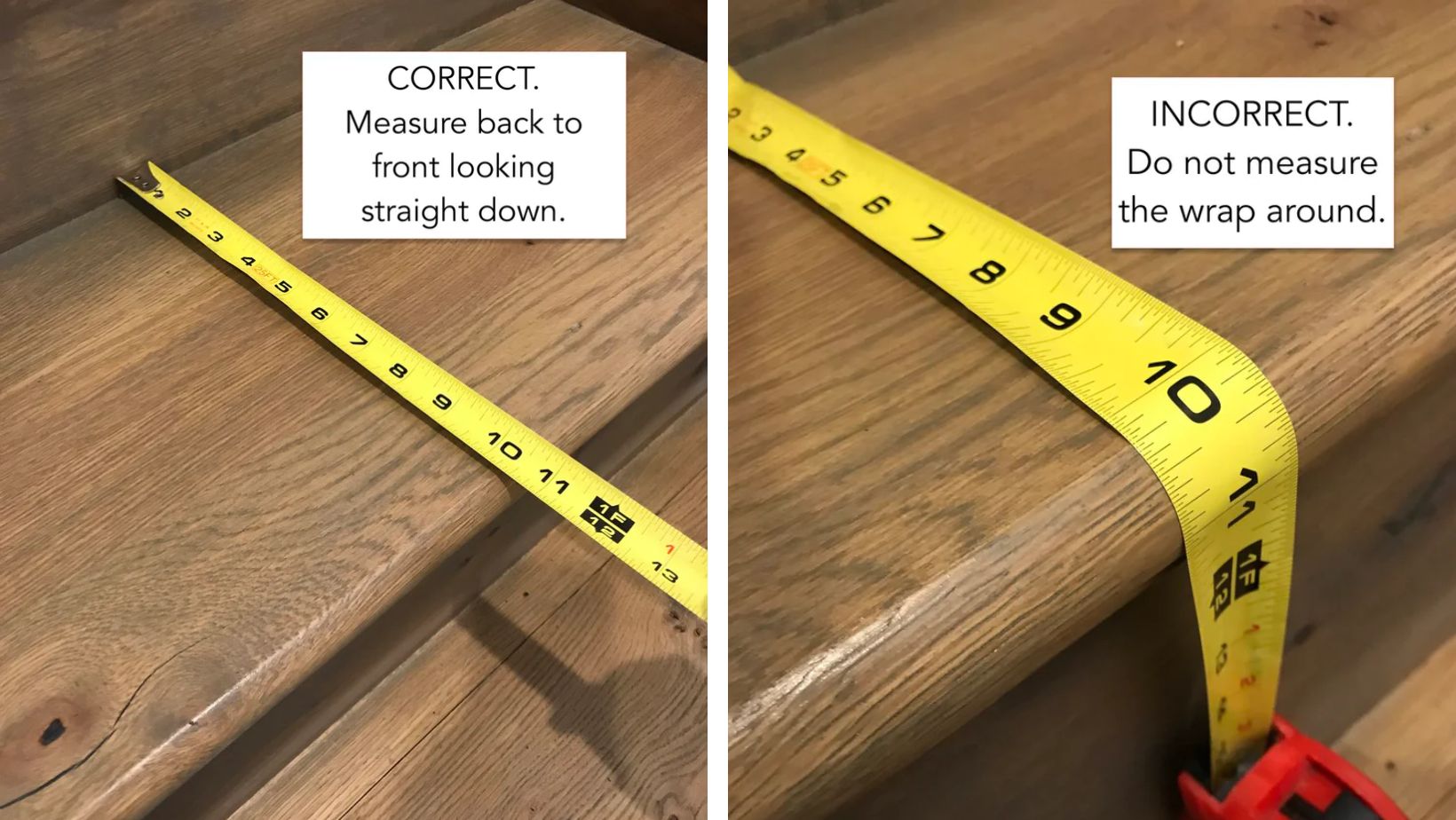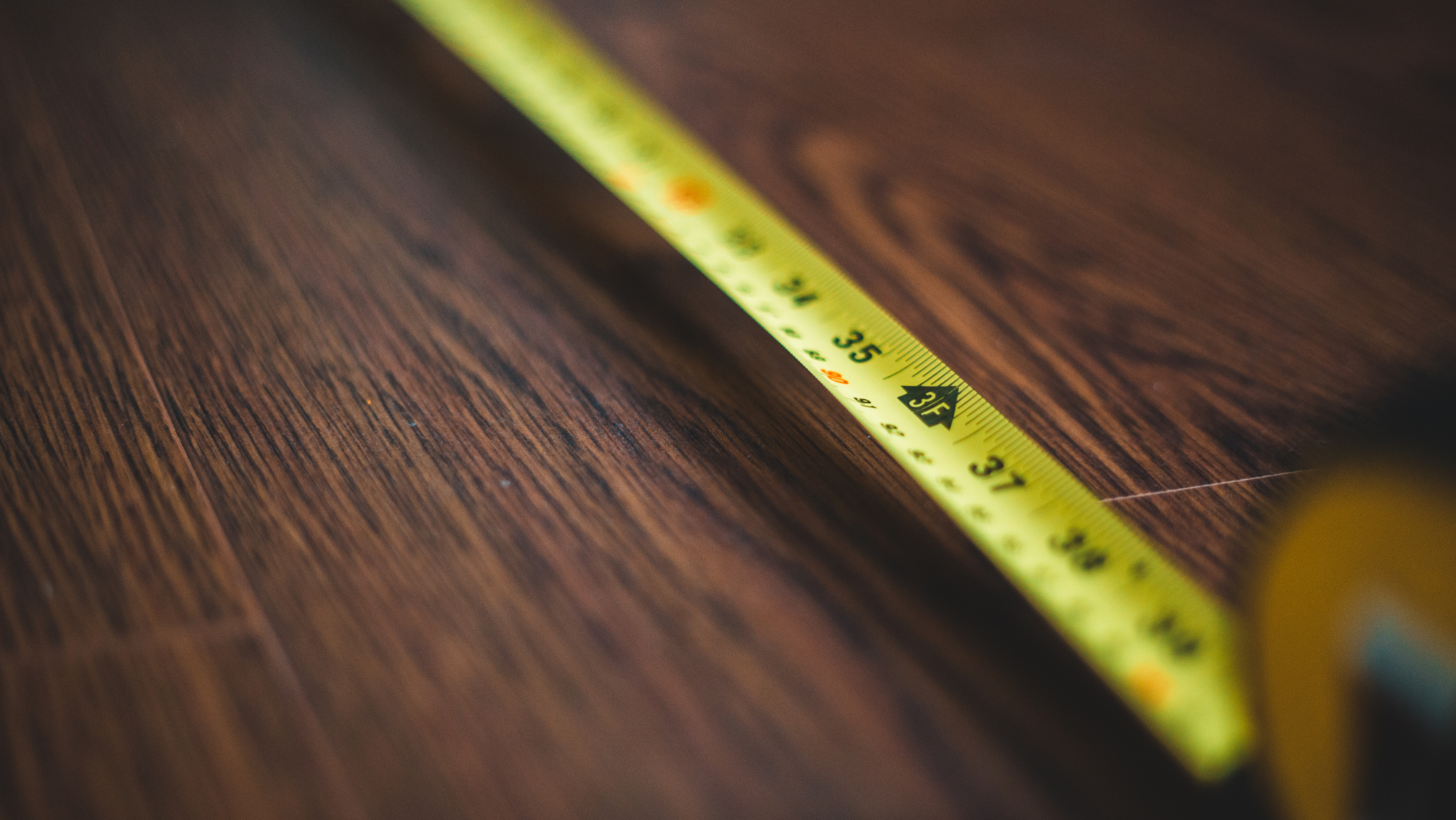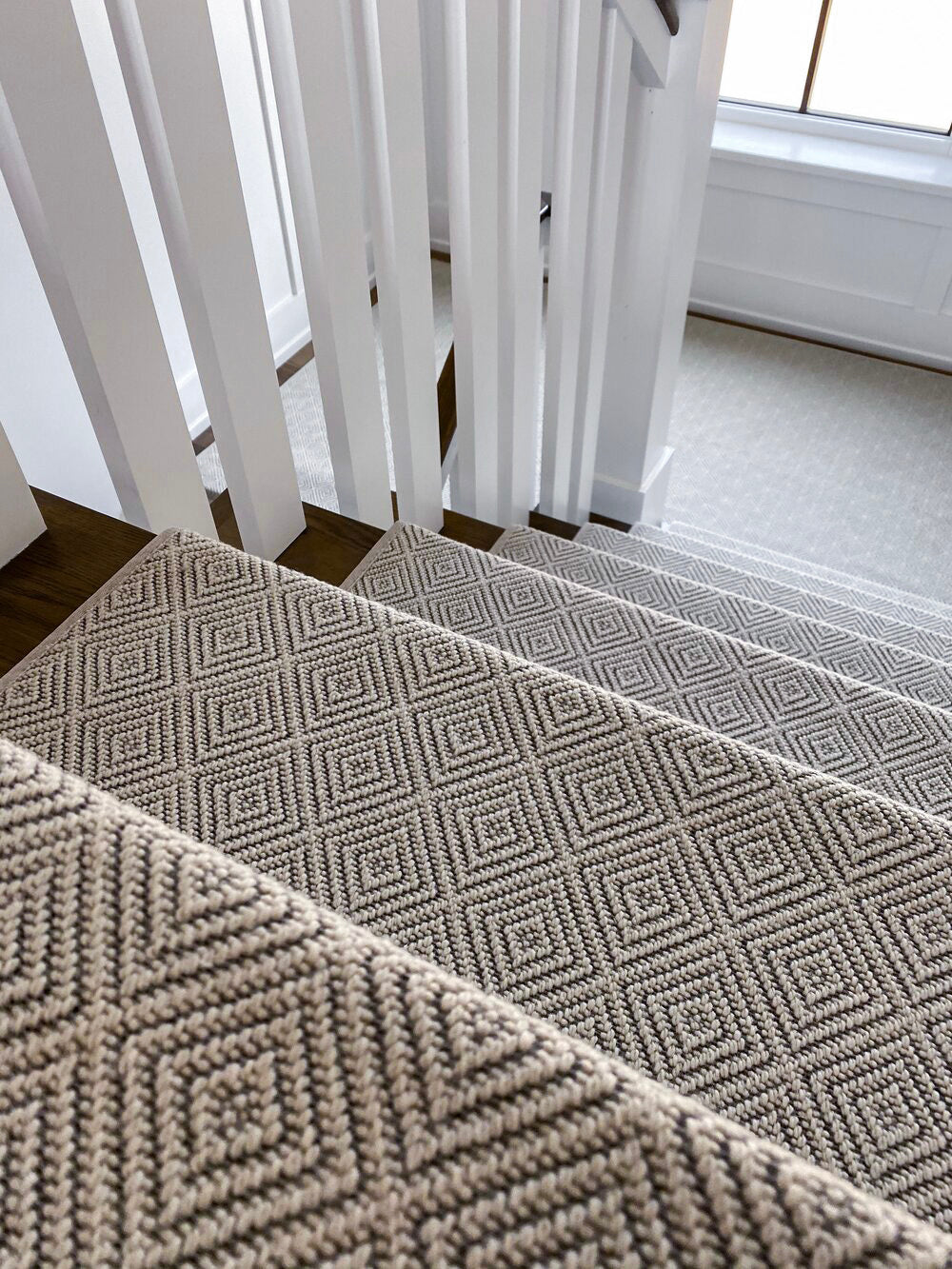Curved staircases add elegance to any home, but finding the right carpet stair treads requires precise measurements.
Curved stair dimensions include tread depth (front to back), tread width (side to side), riser height (vertical distance between steps), and the curve angle.
Measuring these correctly ensures a perfect fit, enhancing both safety and style.
In this guide, you'll learn how to measure your stairs accurately and order custom carpet stair treads that match your unique staircase.
Whether you're dealing with complex curves or landings, we'll walk you through every step.
Keep reading to ensure your stair treads provide the perfect combination of function and design.
Why Accurate Curved Stair Dimensions Matter
Curved staircases can be a stunning addition to any home, but they present unique challenges when it comes to safety and design.
Unlike straight staircases, curved stairs vary in width and depth, making it crucial to get precise measurements.
Getting your stair dimensions right ensures that custom carpet stair treads fit perfectly, reducing the risk of slips and falls.
Without accurate measurements, you may end up with treads that don’t align properly, leading to uneven surfaces that could become a hazard.
Additionally, precise measurements help maintain the overall look of your staircase.
Ill-fitting treads can create gaps or overhangs, which not only compromise safety but also diminish the visual appeal of your home.
How to Measure Curved Stair Dimensions
To get accurate curved stair dimensions, follow these steps:
-
Measure the tread depth – The horizontal distance between the front and back edges of the tread.
-
Measure the tread width – The horizontal distance between the two side edges of the tread.
-
Measure the riser height – The vertical distance from the top of one tread to the top of the next.
-
Measure the angle of the curve – Use a protractor or angle finder to determine the angle of the curve on your staircase.
By carefully taking these measurements, you can ensure your stair treads fit perfectly and provide the maximum level of safety.
Measuring Your Curved Stair Steps Properly
Before placing an order for custom carpet stair treads, it’s important to measure your curved stair steps with precision.
This ensures a perfect fit and a seamless installation.
Tools You'll Need for Measuring
-
Tape measure
-
Pen and paper
-
Straight edge
-
Protractor or angle finder (optional but recommended)
How to Measure Curved Stairs Without a Protractor
If you don’t have a protractor, you can still measure curved stairs accurately with a few simple tools.
-
Use a tape measure to record the rise and run of each step. The rise is the vertical distance from one step to the next, while the run is the horizontal depth of the step.
-
Place a level on the edge of the step and adjust it until the bubble is centered.
-
Use your tape measure to calculate the stair dimension and angle, ensuring consistency by measuring from the same point on each step.
Challenges of Measuring Curved Stairs
Unlike straight stairs, curved stairs are not uniform, which makes the measurement process more complicated.
Some common challenges include:
-
Inconsistent Tread Widths: Since each step may have a different width, it's important to measure every single tread individually.
-
Varying Riser Heights: While some staircases maintain consistent riser heights, others may have slight variations that affect tread placement.
-
Complex Curves: If your staircase has a steep or irregular curve, additional measurements may be required to ensure proper fit.
To address these challenges, take your time with measurements and double-check each one before placing an order.
Ordering the Correct Size Treads
When selecting custom carpet stair treads, you’ll need to choose between standard sizes and custom-made options.
Standard Tread Sizes vs. Custom Tread Sizes
-
Custom Treads – Designed to fit your unique curved staircase, ensuring an exact match. They also offer more design options, including different materials, colors, and patterns.
-
Standard Treads – Available for common staircase dimensions but may not provide a perfect fit or as many design options.
If you want a seamless look and enhanced safety, custom carpet stair treads are the best option.
How to Make a Template for Custom Orders
If you’re ordering custom carpet stair treads, creating a template can help ensure accuracy.
Materials Needed:
-
Large piece of paper or cardboard
-
Scissors
-
Tape
-
Pen or marker
Step-by-Step Instructions:
-
Cut the paper or cardboard to match the size of your stair step.
-
Place it on the stair step and tape it down securely.
-
Trace the outline of the stair step onto the paper or cardboard.
-
Cut out the traced shape.
-
Label each template with the corresponding stair step number.
-
Repeat for all curved stair steps.
-
Take photos of the templates and send them to the manufacturer.
Measuring Egress Stair Dimensions
Egress stair dimensions are essential for ensuring that your staircase meets building code requirements.
These stairs provide a safe exit route in case of an emergency, so proper measurements are crucial.
-
Measure the total rise – The vertical distance from the bottom to the top of the staircase.
-
Measure the total run – The total horizontal distance covered by the staircase.
-
Divide the total rise by the total run to calculate the stair slope.
-
Measure individual stair treads and risers to determine their exact dimensions, ensuring compliance with safety regulations.
Getting Your Stair Dimensions for Landings
If your curved staircase includes landings, you’ll need to measure them as well.
-
Measure the length and width – Determine the horizontal and vertical dimensions of the landing.
-
Measure the curve angle – Use a protractor or angle finder for accuracy.
Ordering Custom Carpet Stair Treads for Landings
Custom carpet stair treads for landings enhance both safety and style.
When placing your order, specify that the treads are for a landing and provide the precise measurements.
Common Mistakes to Avoid When Measuring Curved Stairs
To ensure your custom carpet stair treads fit perfectly, avoid these common mistakes:
-
Skipping Individual Tread Measurements – Since curved stairs vary in size, each step must be measured separately.
-
Not Accounting for Overhangs – Some stairs have overhangs that affect the tread size. Be sure to include these in your measurements.
-
Using Inconsistent Starting Points – Always measure from the same point on each step to maintain accuracy.
Stepping It Up
Custom carpet stair treads are an excellent way to improve the safety and appearance of your curved staircase.
By taking accurate measurements, you can ensure a perfect fit that enhances both function and style.
If your staircase has both curved and straight steps, check out our guide to measuring straight stair steps.
Whether you choose standard or custom treads, investing in high-quality carpet stair treads adds an extra layer of safety for your family while elevating the look of your home.
Contact Us Today!
For more information, reach out to Oak Valley Designs:
-
Website: https://oakvalleydesigns.com/
-
Phone: 706.331.0315
-
Email: info@oakvalleydesigns.com
-
Address: 30 River Ct SW Bldg E Cartersville, Ga 30120




